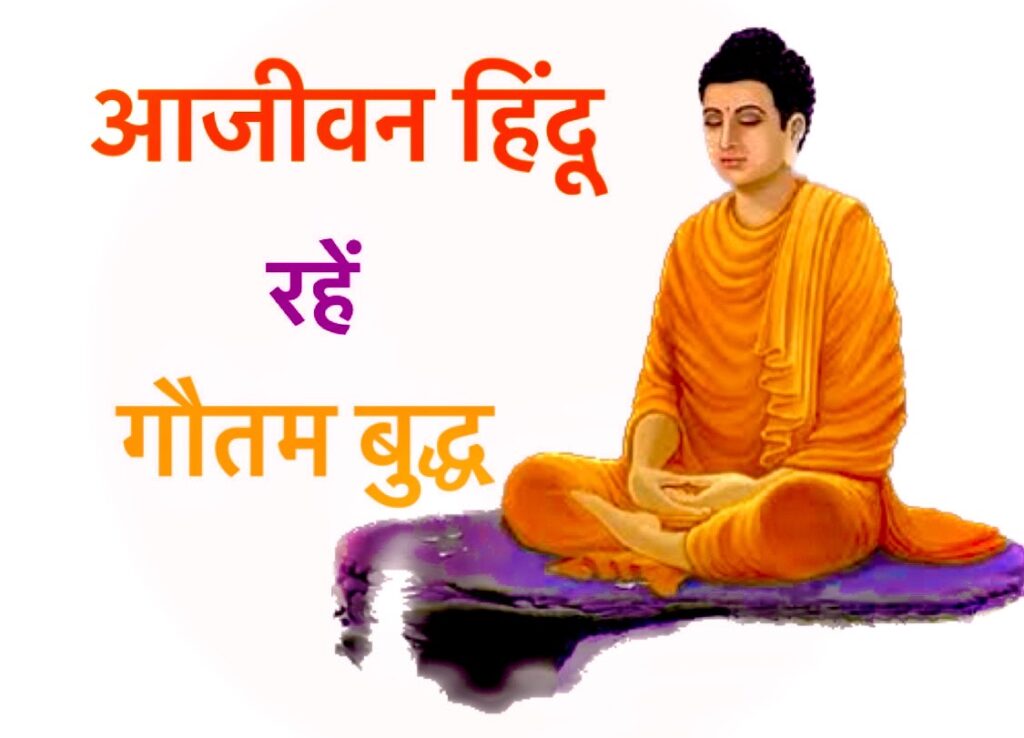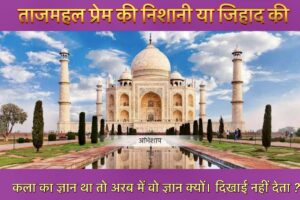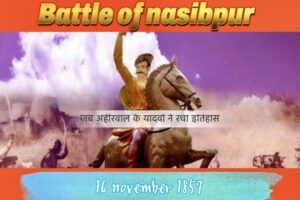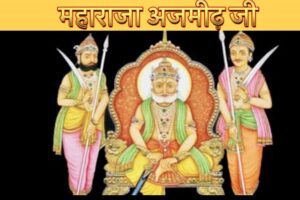Is Buddhism a form of Hinduism?

क्या हिंदू धर्म को तोड़ने के लिए जय भीम जय मीम का नारा दिया है ?
कौन बोद्ध के नाम पर हिंदू धर्म के लोगो को गुमराह कर रहा है ?
क्या बोद्ध धर्म हिंदू धर्म का ही स्वरूप है ?
बोद्ध धर्म को लेकर फैल रही आजकल भ्रान्तियाँ
आजीवन हिन्दू रहे गौतम बुद्ध
हमारे अनेक बुद्धिजीवी एक भ्रांति के शिकार हैं, जो समझते हैं कि गौतम बुद्ध के साथ भारत में कोई नया ‘धर्म’ आरंभ हुआ। तथा यह पूर्ववर्ती हिन्दू धर्म के विरुद्ध ‘विद्रोह’ था। यह पूरी तरह कपोल-कल्पना है कि बुद्ध ने जाति-भेदों को तोड़ डाला, और किसी समता-मूलक दर्शन या समाज की स्थापना की। कुछ वामपंथी लेखकों ने तो बुद्ध को मानो कार्ल मार्क्स का पूर्व-रूप जैसा दिखाने का यत्न किया है। मानो वर्ग-विहीन समाज बनाने का विचार बुद्ध से ही शुरू हुआ देखा जा सकता है, आदि।
लेकिन यदि गौतम बुद्ध के जीवन, विचार और कार्यों पर संपूर्ण दृष्टि डालें, तो उन के जीवन में एक भी प्रसंग नहीं कि उन्होंने वंश और जाति-व्यवहार की अवहेलना करने को कहा हो।उलटे, जब उन के मित्रों या अनुयायों के बीच दुविधा के प्रसंग आए, तो बुद्ध ने स्पष्ट रूप से पहले से चली आ रही रीतियों का सम्मान करने को कहा।
एक बार जब गौतम बुद्ध के मित्र प्रसेनादी को पता चला कि उन की पत्नी पूरी शाक्य नहीं, बल्कि एक दासी से उत्पन्न शाक्य राजा की पुत्री है, तब उसने उस का और उस से हुए अपने पुत्र का परित्याग कर दिया। किन्तु बुद्ध ने अपने मित्र को समझा कर उस का कदम वापस करवाया। तर्क यही दिया कि पंरपरा से संतान की जाति पिता से निर्धारित होती है, इसलिए शाक्य राजा की पुत्री शाक्य है। यदि बुद्ध को जाति-प्रथा से कोई विद्रोह करना होता, या नया मत चलाना होता, तो उपयुक्त होता कि वे सामाजिक, जातीय परंपराओं का तिरस्कार करने को कहते। बुद्ध ने ऐसा कुछ नहीं किया। कभी नहीं किया।
बुद्ध का यह व्यवहार सुसंगत था। तुलनात्मक धर्म के प्रसिद्ध ज्ञाता डॉ. कोएनराड एल्स्ट ने इस पर बड़ी मार्के की बात कही है कि जिसे संसार को आध्यात्मिक शिक्षा देनी हो, वह सामाजिक मामलों में कम से कम दखल देगा। कोई क्रांति करना, नया राजनीतिक-आर्थिक कार्यक्रम चलाना तो बड़ी दूर की बात रही! एल्स्ट के अनुसार, ‘यदि किसी आदमी के लिए अपनी ही मामूली कामनाएं संतुष्ट करना एक विकट काम होता है, तब किसी कल्पित समानतावादी समाज की अंतहीन इच्छाएं पूरी करने की ठानना कितना अंतहीन भटकाव होगा!’
अतः यदि बुद्ध को अपना आध्यात्मिक संदेश देना था, तो यह तर्कपूर्ण था कि वे सामाजिक, राजनीतिक, आर्थिक व्यवस्थाओं में कम-से-कम हस्तक्षेप करते। उन की चिन्ता कोई ‘ब्राह्मण-वाद के विरुद्ध विद्रोह’, राजनीतिक कार्यक्रम, आदि की थी ही नहीं, जो आज के मार्क्सवादी, नेहरूवादी या कुछ अंबेदकरवादी उन में देखते या भरते रहते हैं। इसीलिए स्वभावतः बुद्ध के चुने हुए शिष्यों में लगभग आधे लोग ब्राह्मण थे। उन्हीं के बीच से वे अधिकांश प्रखर दार्शनिक उभरे, जिन्होंने समय के साथ बौद्ध-दर्शन और ग्रंथों को महान-चिंतन और गहन तर्क-प्रणाली का पर्याय बना दिया।
यह भी एक तथ्य है कि भारत के महान विश्वविद्यालय बुद्ध से पहले की चीज हैं।तक्षशिला का प्रसिद्ध विश्वविद्यालय गौतम बुद्ध के पहले से था, जिस में बुद्ध के मित्र बंधुला और प्रसेनादी पढ़े थे। कुछ विद्वानों के अनुसार स्वयं सिद्धार्थ गौतम भी वहाँ पढ़े थे। अतः यह कहना उपयुक्त होगा कि बौद्धों ने उन्हीं संस्थाओं को और मजबूत किया जो उन्हें हिन्दू समाज द्वारा पहले से मिली थी। बाद में, बौद्ध विश्वविद्यालयों ने भी आर्यभट्ट जैसे अनेक गैर-बौद्ध वैज्ञानिकों को भी प्रशिक्षित किया। इसलिए, वस्तुतः चिंतन, शिक्षा और लोकाचार किसी में बुद्ध ने कोई ऐसी नई शुरुआत नहीं की थी जिसे पूर्ववर्ती ज्ञान, परंपरा या धर्म का प्रतिरोधी कहा जा सकता हो।
ध्यान दें, बुद्ध ने भविष्य में अपने जैसे किसी और ज्ञानी (‘मैत्रेय’, मित्रता-भाईचारा का पालक) के आगमन की भी भविष्यवाणी की थी, और यह भी कहा कि वह ब्राह्मण कुल में जन्म लेगा। यदि बुद्ध के लिए कुल, जाति और वंश महत्वहीन होते, तो वे ऐसा नहीं कह सकते थे। उन्होंने अपने मित्र प्रसेनादी को वही समझाया, जो सब से प्राचीन उपनिषद में सत्यकाम जाबालि के संबंध में तय किया गया था। कि यदि उस की माता दासी भी थी, तब भी परिस्थिति उस के पिता को ब्राह्मण कुल का ही कोई व्यक्ति दिखाती थी, अतः वह ब्राह्मण बालक था और इस प्रकार अपने गुरू द्वारा स्वीकार्य शिष्य हुआ। उसी पारंपरिक रीति का पालन करने की सलाह बुद्ध ने अपने मित्र को दी थी।
इसीलिए वास्तविक इतिहास यह है कि पूर्वी भारत में गंगा के मैदानों वाले बड़े शासकों, क्षत्रपों ने गौतम बुद्ध का सत्कार अपने बीच के विशिष्ट व्यक्ति के रूप में किया था। क्योंकि बुद्ध वही थे भी। उन्हीं शासकों ने बुद्ध के अनुयायियों, भिक्षुओं के लिए बड़े-बड़े मठ, विहार बनवाए।
जब बुद्ध का देहावसान हुआ, तब आठ नगरों के शासकों और बड़े लोगों ने उन की अस्थि-भस्मी पर सफल दावा किया थाः ‘हम क्षत्रिय हैं, बुद्ध क्षत्रिय थे, इसलिए उन क
े भस्म पर हमारा अधिकार है।’ बुद्ध के देहांत के लगभग आधी शती बाद तक बुद्ध के शिष्य सार्वजनिक रूप से अपने जातीय नियमों का पालन निस्संकोच करते मिलते हैं। यह सहज था, क्योंकि बुद्ध ने उन से अपने जातीय संबंध तोड़ने की बात कभी नहीं कही। जैसे, अपनी बेटियों को विवाह में किसी और जाति के व्यक्ति को देना, आदि।
अतः ऐतिहासिक तथ्य यह है कि हिन्दू समाज से अलग कोई अ-हिन्दू बौद्ध समाज भारत में कभी नहीं रहा। अधिकांश हिन्दू विविध देवी-देवताओं की उपासना करते रहे हैं। उसी में कभी किसी को जोड़ते, हटाते भी रहे हैं। जैसे, आज किसी-किसी हिन्दू के घर में रामकृष्ण, श्रीअरविन्द या डॉ. अंबेदकर भी उसी पंक्ति में मिल जाएंगे जहाँ शिव-पार्वती या राम, दुर्गा, आदि विराजमान रहते हैं। गौतम बुद्ध, संत कबीर या गुरू नानक के उपासक उसी प्रकार के थे। वे अलग से कोई बौद्ध या सिख लोग नहीं थे।
पुराने बौद्ध विहारों, मठों, मंदिरों को भी देखें तो उन में वैदिक प्रतीकों और वास्तु-शास्त्र की बहुतायत मिलेगी। वे पुराने हिन्दू नमूनों का ही अनुकरण करते रहे हैं। बौद्ध मंत्रों में, भारत से बाहर भी, वैदिक मंत्रों की अनुकृति मिलती है। जब बुद्ध धर्म भारत से बाहर फैला, जैसे चीन, जापान, स्याम, आदि देशों में, तो यहाँ से वैदिक देवता भी बाहर गए। उदाहरण के लिए, जापान के हरेक नगर में देवी सरस्वती का मंदिर है। सरस्वती को वहाँ ले जाने वाले ‘धूर्त ब्राह्मण’ नहीं, बल्कि बौद्ध लोग थे!
अपने जीवन के अंत में बुद्ध ने जीवन के सात सिद्धांतों का उल्लेख किया था, जिन का पालन करने पर कोई समाज नष्ट नहीं होता। प्रसिद्ध इतिहासकार सीताराम गोयल ने अपने सुंदर उपन्यास ‘सप्त-शील’ (1960) में उसी को वैशाली गणतंत्र की पृष्ठभूमि में अपना कथ्य बनाया है। इन सात सदगुणों में यह भी हैं – अपने पर्व-त्योहार का आदर करना एवं मनाना, तीर्थ व अनुष्ठान्न करना, साधु-संतों का सत्कार करना। हमारे अनेक त्योहार वैदिक मूल के हैं। बुद्ध से समय भी पर्व-त्योहार अपने से पहले के ही थे। महाभारत में भी नदी किनारे तीर्थ करने के विवरण मिलते हैं। सरस्वती और गंगा के तटों पर बलराम और पांडव तीर्थ करने गए थे। अतः जहाँ तक सामाजिक और धार्मिक व्यवहारों की बात है, बुद्ध ने कभी पुराने व्यवहारों के विरुद्ध कुछ नहीं कहा। यदि कुछ कहा, तो उन का आदर और पालन करने के लिए ही। इस प्रकार, कोई विद्रोही या क्रांतिकारी होने से ठीक उलट, गौतम बुद्ध पूरी तरह परंपरावादी थे। उन्होंने चालू राजनीतिक या सामाजिक व्यवस्था को बनाए रखने की सलाह दी थी। वे आजीवन एक हिन्दू दार्शनिक रहे। डॉ. एल्स्ट के शब्दों में, ‘बुद्ध अपने पोर-पोर में हिन्दू थे।’ लेकिन ठीक इसी बात को नकारने के लिए बुद्ध धर्म की भ्रांत व्याख्या की जाती रही है। इसे परखना चाहिए।
Has the slogan of Jai Bhim Jai Mim been given to break Hindu religion?
Who is misleading the people of Hindu religion in the name of Buddhism?
Is Buddhism a form of Hinduism?
Misconceptions spreading about Buddhism these days Gautam Buddha remained a Hindu all his life.
Many of our intellectuals are victims of a misconception, who think that a new ‘religion’ started in India with Gautam Buddha. And this was a ‘rebellion’ against the previous Hindu religion. It is a complete fiction that Buddha broke caste differences and established an egalitarian philosophy or society. Some leftist writers have even tried to show Buddha as a pre-form of Karl Marx. As if the idea of creating a class-less society can be seen to have started from Buddha itself, etc. But if we take a complete look at the life, thoughts and actions of Gautam Buddha, then there is not a single incident in his life in which he asked to ignore lineage and caste-related behavior.
On the contrary, when there was a dilemma among his friends or followers, When the situation arose, Buddha clearly asked to respect the customs that were already in place. Once Gautam Buddha’s friend Prasenadi came to know that his wife was not a complete Shakya, but was the daughter of a Shakya king born to a maid, then he abandoned her and his son from her. But Buddha convinced his friend and made him turn back.
The argument given was that by tradition the caste of the child is determined by the father, hence the daughter of a Shakya king is Shakya. If Buddha had to rebel against the caste system, or start a new religion, it would have been appropriate that he would have asked to despise social and caste traditions. Buddha did not do anything like this. never done. This behavior of Buddha was consistent.
Dr. Conrad Elst, a renowned expert on comparative religion, has made a great statement on this point that the one who has to give spiritual education to the world will have the least interference in social matters. Making a revolution, running a new political-economic program was a very distant thing! According to Elst, ‘If it is a terrible task for a man to satisfy his own trivial desires, then what an infinite disorientation it would be to set out to satisfy the infinite desires of an imaginary egalitarian society!’ Therefore, if Buddha had to convey his spiritual message, it was logical that he would have minimal interference in the social, political and economic systems. He was not concerned about any ‘revolt against Brahminism’, political programs, etc., which today’s Marxists, Nehruists or some Ambedkarites keep seeing or instilling in him.
That is why naturally almost half of Buddha’s chosen disciples were Brahmins. It was from among them that most of the brilliant philosophers emerged, who over time made Buddhist philosophy and texts synonymous with great thinking and deep logical system. It is also a fact that the great universities of India predate Buddha. The famous university of Takshashila existed before Gautam Buddha, in which Buddha’s friends Bandhula and Prasenadi studied. According to some scholars, Siddhartha Gautam himself had also studied there.
Therefore, it would be appropriate to say that the Buddhists further strengthened those institutions which they had already inherited from the Hindu society. Later, Buddhist universities also trained many non-Buddhist scientists, such as Aryabhata. Therefore, in fact, Buddha did not initiate anything new in thought, teaching and ethos that could be said to be contradictory to previous knowledge, tradition or religion. Note that the Buddha also predicted the future arrival of another Gnani like himself (‘Maitreya’, the fosterer of friendship-brotherhood), and also said that he would be born in a Brahmin clan. If clan, caste and lineage were unimportant to Buddha, he could not have said this. He explained to his friend Prasenadi what had been decided in the oldest Upanishad regarding Satyakama Jabali.
That even if his mother was a maid, circumstances still showed his father to be someone from a Brahmin clan, hence he was a Brahmin child and thus became an accepted disciple by his guru. Buddha had advised his friend to follow the same traditional practice. That is why the real history is that the big rulers and satraps of the Ganga plains in Eastern India welcomed Gautam Buddha as a special person among them. Because Buddha was the same. The same rulers built big monasteries and monasteries for the followers and monks of Buddha. When the Buddha died, the rulers and prominent people of eight cities made a successful claim on his ashes: ‘We are Kshatriyas, Buddha was a Kshatriya, therefore his We have the right over the ashes.’ For almost half a century after Buddha’s death, Buddha’s disciples are found following their caste rules in public without any hesitation. This was natural, because Buddha never asked them to break their caste relations. Like, giving their daughters in marriage to a person of another caste, etc. Therefore, the historical fact is that no non-Hindu Buddhist society separate from the Hindu society ever existed in India. Most of the Hindus have been worshiping various gods and goddesses. Sometimes people have been added and removed from it. For example, today in some Hindu house, Ramakrishna, Sri Aurobindo or Dr. Ambedkar will also be found in the same row where Shiva-Parvati or Ram, Durga, etc. reside. The worshipers of Gautam Buddha, Saint Kabir or Guru Nanak were of the same type. They were not separate Buddhists or Sikhs.
If we look at old Buddhist monasteries, monasteries and temples, we will find abundance of Vedic symbols and Vaastu-shastra in them. They have been following the old Hindu models only. In Buddhist mantras, even outside India, imitations of Vedic mantras are found. When Buddhism spread outside India, to countries like China, Japan, Siam, etc., the Vedic gods also went out from here. For example, there is a temple of Goddess Saraswati in every city of Japan. Those who took Saraswati there were not ‘sly Brahmins’, but Buddhist people! At the end of his life, Buddha had mentioned seven principles of life, if followed, no society will be destroyed. Famous historian Sitaram Goyal has made the same story his theme in his beautiful novel ‘Sapta-Sheel’ (1960) in the background of Vaishali Republic. These seven virtues also include – respecting and celebrating one’s festivals, performing pilgrimages and rituals, and honoring sages and saints. Many of our festivals are of Vedic origin. Even at the time of Buddha, the festivals were before him. Even in the Mahabharata, there are descriptions of pilgrimage on the banks of the river. Balarama and Pandavas had gone on pilgrimage to the banks of Saraswati and Ganga. Therefore, as far as social and religious practices are concerned, Buddha never said anything against the old practices. If anything is said, it is only to respect and obey them. Thus, unlike any rebel or revolutionary, Gautam Buddha was a complete traditionalist. He advised to maintain the existing political or social system. He remained a Hindu philosopher throughout his life. In the words of Dr. Elst, ‘Buddha was a Hindu to his core.’ But Buddhism has been misinterpreted to deny exactly this. This should be tested.








Sweet web site, super design, very clean and utilise genial.
I really like your writing style, fantastic info , regards for putting up : D.